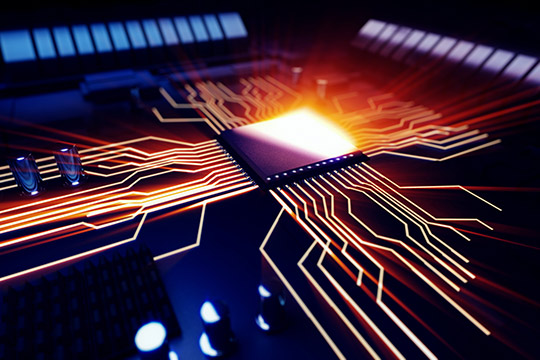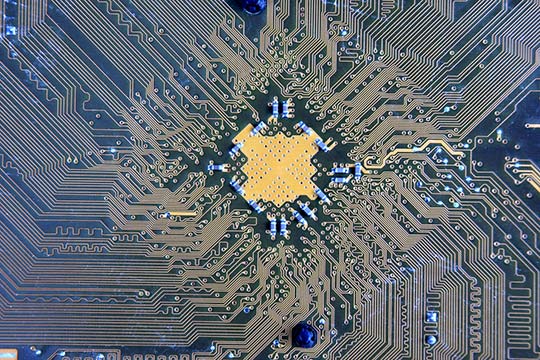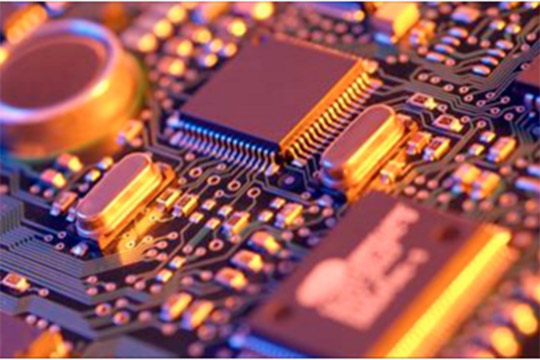TECHNOLOGY FOCUS
Lithographically fabricated structures appear in an increasingly wide range of scientific fields, including electrochemistry, biochemistry, biophysics, photonics, and medicine, beyond their traditional niches in electronics. They are enabling a growing array of technical applications, including patterned media, optoelectronic, fluidic, sensing, energy conversion and storage devices, not to mention “internet-of-things” devices. It is therefore necessary to offer opportunities to people interested in alternative lithographic technologies to learn about them and gain expertise, even if they are starting new in the field or are already well versed in lithography.


COURSE CONTENT
This course explores the physical and chemical basis of alternative lithography, which in all its essential aspects involves transformations that are designed to print a relief image of an object on a flat surface. The object may be a mold or template or mask containing patterns of devices; the flat surface may be a silicon wafer or flexible polymeric substrate coated with resist, which upon imprinting with the aid of mechanical force (as in the case of imprint resists), or heat treatment or solvent annealing or application of electric field (as in the case of block copolymer resists, colloidal particles, monolayer), or scanning (as in scanning probe resists), or UV exposure (as in stereolithography) is transformed into the relief image of the mask or template. Underlying some of these transformations are distinct chemical reactions that are mediated by electrons, or physical transformations mediated by thermodynamically induced microphase separation and mechanical forces. By drawing on fundamental, theoretical and experimental studies of molecular processes in alternative lithography, including those based on imprint lithography; colloidal particle self-assembly, self-assembling monolayer, and directed block copolymer self-assembly lithography; scanning (proximal) probe lithography based on tunneling microscopy, scanning atomic force microscopy; and stereolithography; we will deconstruct alternative lithography into its essential chemical and physical principles.
On a practical level, the course will provide a full overview of alternative lithographic tool systems, operational principles and theories that underpin the various alternative lithographic techniques; strategies, processes, and materials used in their operations; their unique features, strengths, and limitations; and specific applications to which they are targeted. Also covered in the course are status, technical challenges, scaling, and future trends of alternative lithographic technologies in general.
WHO SHOULD ATTEND
This course is intended for scientists and engineers who wish to expand their knowledge of alternative lithographic technologies targeted to applications in scientific fields, including electrochemistry, biochemistry, biophysics, photonics, and medicine, as well as technical fields such as fluidics, sensing, energy conversion and storage, and “internet-of-things.”

DAY 1 – OVERVIEW OF ALTERNATIVE LITHOGRAPHY + IMPRINT LITHOGRAPHY + SELF ASSEMBLY LITHOGRAPHY
Module 1 – Overview of alternative lithographic technologies
a. Introduction
b. Why alternative lithography?
c. International Technology Roadmap for Devices & Semiconductors
d. Summary
Module 2 – Imprint lithography
1. Introduction
a. Principle
2. Types
a. Thermal imprint lithography (T-IL)
b. UV-imprint lithography (UV-IL)
i. Jet and flash UV imprint lithography
c. Combined thermal and UV-imprint lithography.
d. Soft imprint lithography
e. Reverse imprint lithography
f. Substrate conformal imprint lithography
g. Laser-assisted direct imprint lithography
h. Electrochemical imprint lithography
3. Formats
a. Flat bed format
b. Roll-to-roll format
4. Molds (templates)
a. Mold materials
i. Properties
b. Mold fabrication
c. Mold types
i. 2 D molds
ii. 3D molds
iii. Flexible/soft molds
d. Mold surface treatment
e. Mold lifetime
5. Imprint resist materials
i. Thermoplastic organic polymeric imprint resists
ii. Nanoparticle imprint resists
iii. Sol-gel imprint resists
6. Imprint tool
a. Modules
i. Imprint module
ii. Substrate (wafer) stage
iii. Overlay alignment module
iv. Measurement module
v. Environmental control module
7. Physics of the imprint process
a. Squeezing flow theory of the imprint process
8. Critical issues
a. Thickness and uniformity of residual layer
b. Pattern fidelity
c. Defect control
d. Filling process
9. Select applications
a. Patterned media
i. Magnetic storage
ii. Optical storage
b. Photonics
i. LEDs
c. Plasmonics – plasmonic nanostructures - sharp metallic nanocones
d. Optical elements
i. Microlenses, metalenses
ii. Diffractive optical elements
iii. Optical encoders
iv. Waveguides
v. Optical fibers
e. Microfluidics
10. Prospects and challenges
11. Summary
a. The big picture
b. Status & future outlook
Module 3 –Self-assembly lithography
1. Introduction
2. Types
a. Colloidal particle self-assembly lithography
b. Self-assembled monolayer lithography
c. Directed block copolymer self-assembly lithography.
3. Colloidal particle self-assembly lithography
a. History
b. Process
c. Applications
4. Self-assembled monolayer lithography
a. History
b. Process
c. Applications
5. Directed block copolymer self-assembly lithography
a. History
b. Materials
c. Physics of microphase separation
d. Process
i. Graphoepitaxy
ii. Chemoepitaxy
e. Applications
f. Prospects and challenges
6. Summary
a. The big picture
b. Status & outlook
DAY 2 – SCANNING PROBE LITHOGRAPHY + STEREO LITHOGRAPHY + INTERFERENCE LITHOGRAPHY
Module 4 –Scanning Probe lithography
1. Introduction
a. History
b. Types
i. Scanning tunnelling microscope lithography
ii. Scanning atomic force microscope lithography
iii. Dip pen lithography
2. Scanning tunnelling microscope lithography
a. Operational principle
b. Patterning methods
i. Resist exposure
ii. Material removal and etching
iii. Anodic oxidation
iv. Field induced evaporation
v. Material deposition
vi. Manipulation of single atoms and molecules
c. Select applications.
3. Atomic force microscope lithography
a. Operational principle
b. Patterning methods
i. Resist exposure
ii. Indentation, plowing, & etching
iii. Oxidation
iv. Material deposition
vi. Manipulation of single atoms and molecules
c. Select applications.
4. Dip pen lithography
1. Introduction
a. History
2. Operational principle
3. Materials
4. Select applications
5. Summary
a. The big picture
b. Status & outlook
Module 5 –Stereo lithography
1. Introduction
a. History
2. Operational principle
3. Materials
4. Select applications
5. Summary
a. The big picture
b. Status & outlook
Module 6 –interference lithography
1. Introduction
a. History
b. Types
i. Laser interference lithography
ii. Extreme ultraviolet interference lithography
2. Theory
3. Instrumentation
a. UV laser based systems.
i. Instrumentation architecture
i.1. Llyod’s mirror interferometer
i.2. Dual beam interferometer
ii. Requirements on beam size and shape
b. Extreme ultraviolet light-based system.
4. Photoresist exposure
a. Reflections and standing waves
b. Anti-reflection coating & reflectivity control
c. Selection of photoresist
i. Positive or negative resist?
d. Multiple exposure
5. Select applications
a. Nanophotonics – wiregrid polarizers, diffraction gratings, waveguide couplers
b. Nanoimprint stamps/template fabrication
c. Fresnel zone plates fabrication
d. Chemical patterning of self-assembled monolayers for other uses
e. Radiation grafting of polymer nanostructures.
6. Summary
a. The big picture
b. Status & outlook

